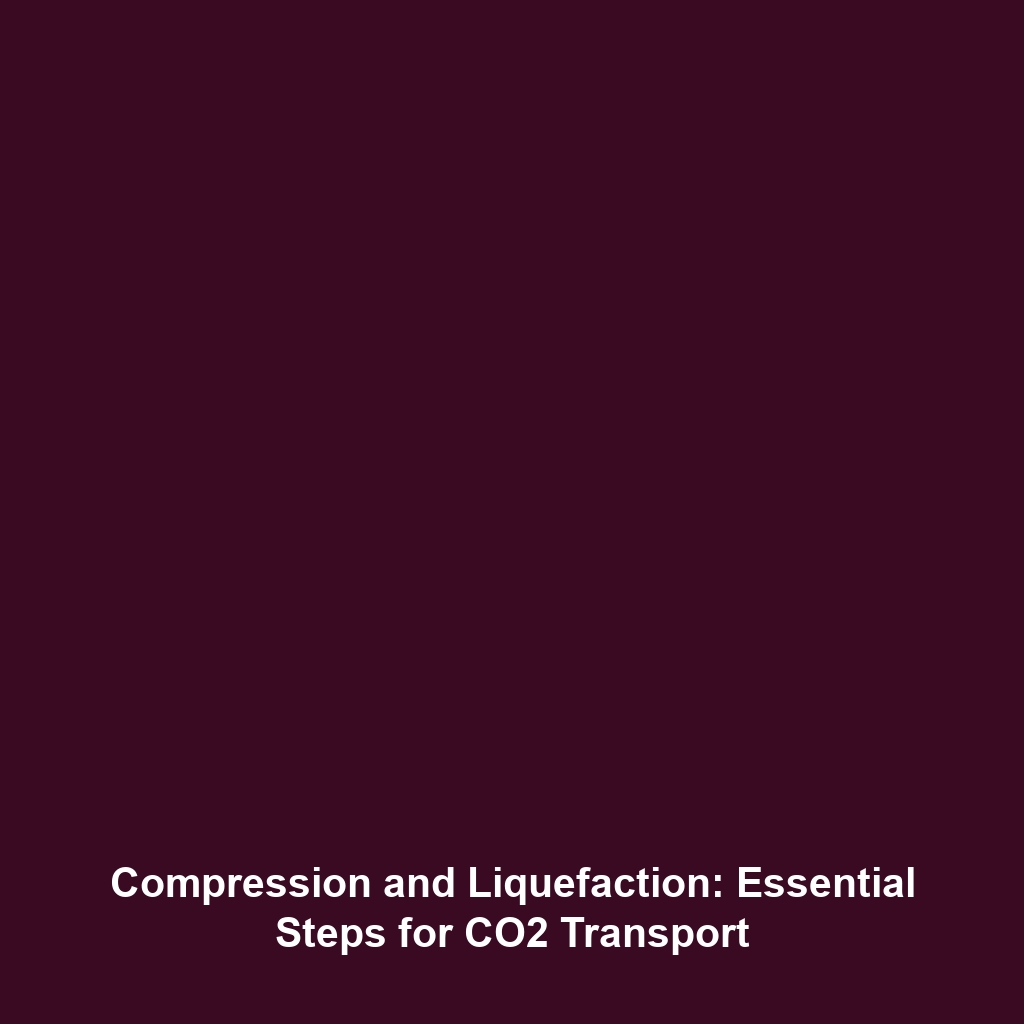Understanding Energy Penalty: The Additional Energy Required for Carbon Capture & Storage (CCS)
In the quest for sustainable energy solutions, Carbon Capture and Storage (CCS) has emerged as a vital technology aimed at reducing greenhouse gas emissions. However, an often-overlooked factor is the Energy Penalty—the additional energy required to operate CCS systems. This energy penalty is significant as it affects the overall efficiency and feasibility of implementing CCS solutions in energy generation and industrial processes. By comprehensively understanding the energy penalties associated with CCS, stakeholders can better evaluate its role in combatting climate change.
Key Concepts of Energy Penalty in CCS
The energy penalty in CCS refers to the extra energy consumption necessary to capture carbon dioxide (CO2) from power plants or industrial facilities, transport it to storage sites, and ultimately store it safely underground. Understanding this concept involves several key principles:
- CO2 Capture Methods: Various technologies exist, including pre-combustion, post-combustion, and oxy-fuel combustion, each with distinct energy demands and efficiency profiles.
- Impact on Net Efficiency: The additional energy used for capture reduces the net output of energy generation, potentially leading to increased fuel consumption and higher operating costs.
- Sustainable Energy Systems: Integrating CCS into renewable energy systems may mitigate the energy penalty by utilizing surplus energy for carbon capture purposes.
Applications and Real-World Uses
The applications of energy penalty in Carbon Capture and Storage (CCS) are critical in various sectors.
- Power Generation: Fossil fuel power plants outfitted with CCS can reduce their carbon footprints, but they incur energy penalties that must be accounted for in overall energy production.
- Cement and Steel Industries: Industries known for high emissions are exploring CCS to capture CO2 during production processes, albeit facing significant energy challenges.
- Enhanced Oil Recovery (EOR): Captured CO2 can be utilized for EOR, creating a dual benefit of energy extraction while addressing carbon emissions. However, the energy required for capture remains a critical consideration.
Current Challenges Facing Energy Penalty in CCS
Despite the potential benefits, there are notable challenges of energy penalty in Carbon Capture and Storage (CCS) including:
- High Operational Costs: The additional energy requirement leads to increased operational costs for facilities, potentially making CCS economically unviable.
- Regulatory Hurdles: Existing regulations may not adequately address the complexities and setbacks associated with increased energy demand in CCS implementations.
- Technological Limitations: Current capture technologies vary in efficiency, and ongoing research is crucial to identify methods that minimize energy consumption.
Future Research and Innovations
Emerging research aims to reduce the energy penalty associated with CCS through innovative technologies. Key areas of focus include:
- Next-Gen Capture Technologies: Development of advanced capture materials and processes that require less energy to operate.
- Integration with Renewable Energy: Utilizing excess renewable energy sources to power CCS operations, potentially negating the energy penalty.
- Nanotechnology and AI: Harnessing these technologies to optimize energy usage and efficiency in carbon capture processes.
Conclusion
In summary, understanding the energy penalty required for Carbon Capture and Storage (CCS) is essential for comprehensively evaluating its viability in addressing climate change. The delicate balance between capturing emissions and maintaining energy efficiency presents ongoing challenges and opportunities for innovation. Stakeholders must prioritize research and development to minimize energy consumption while maximizing carbon capture effectiveness. For further insights into CCS technologies, explore our articles on CCS Technologies and Environmental Impact of CCS.





